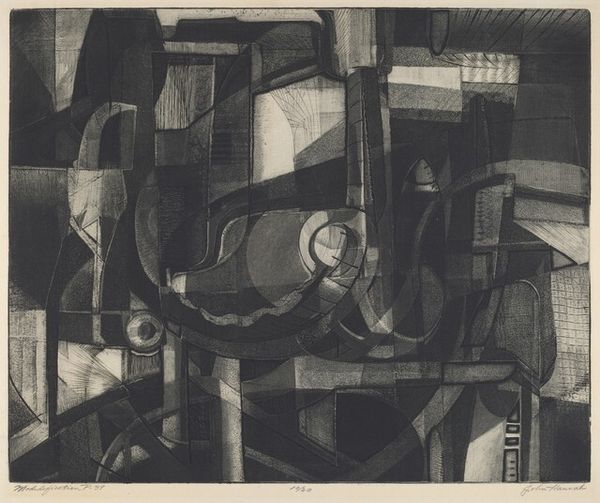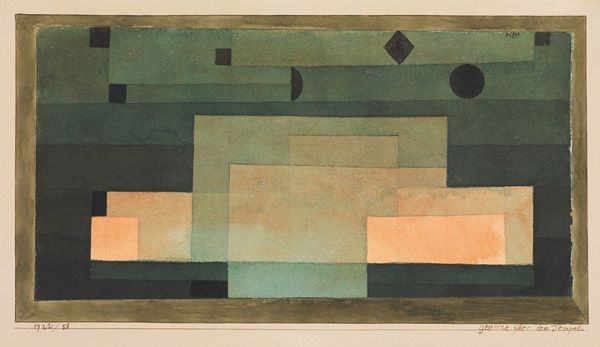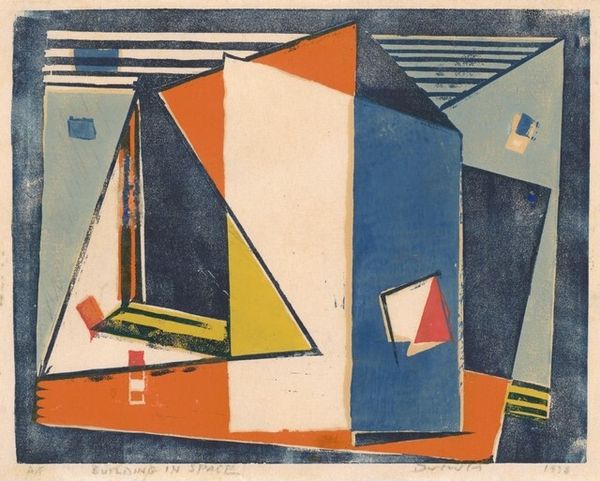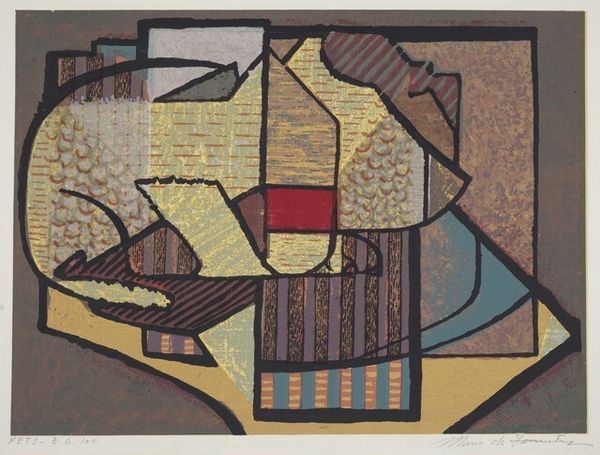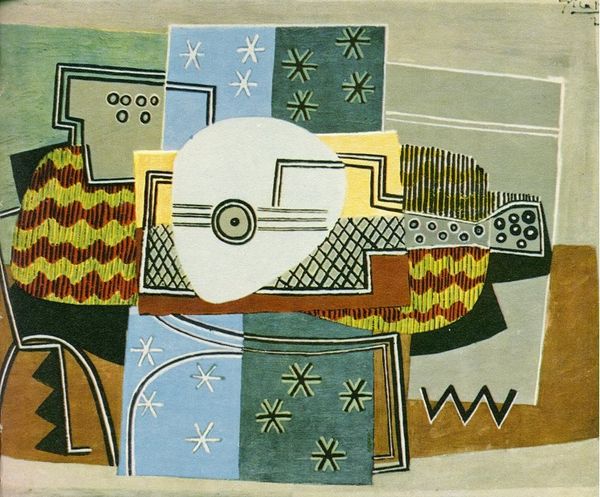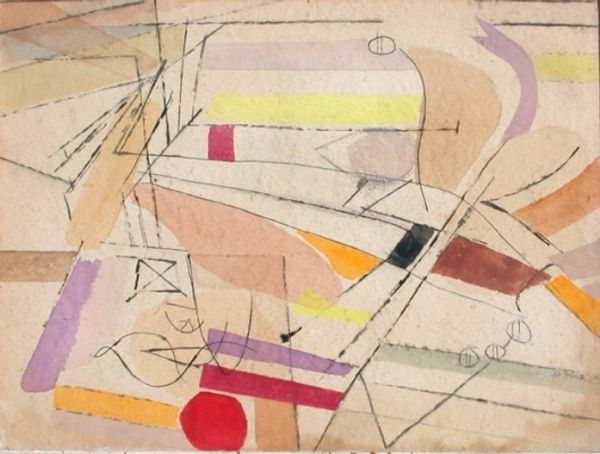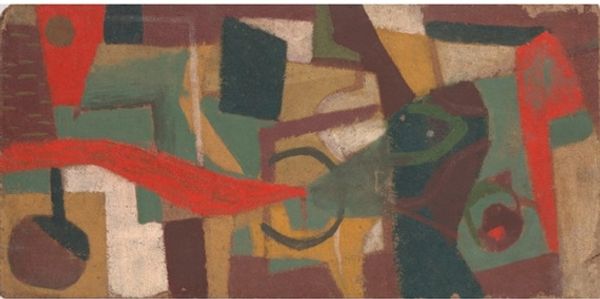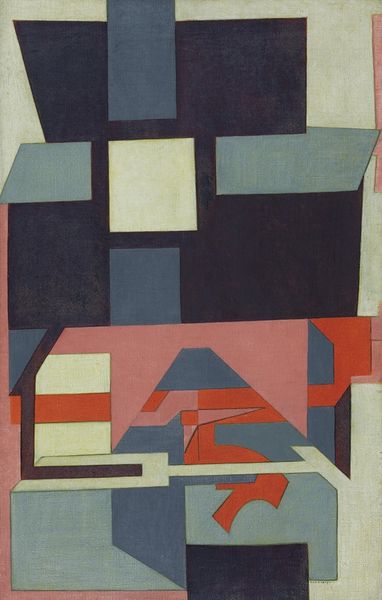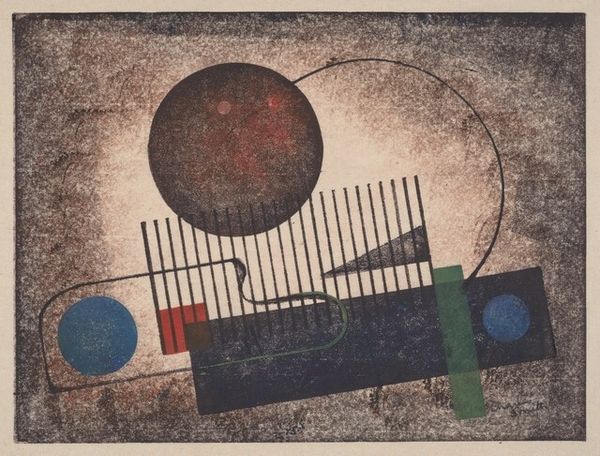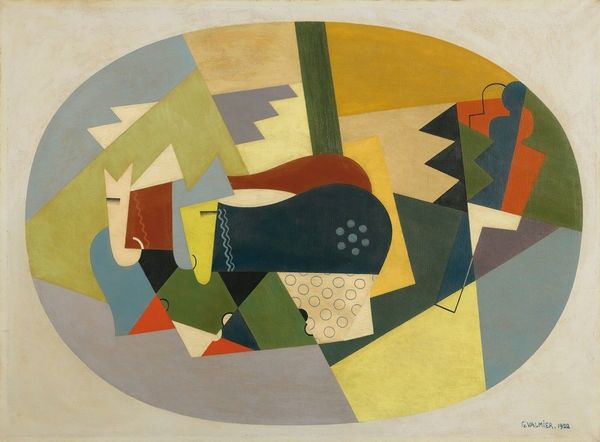
# print
#
constructivism
#
geometric
#
abstraction
Dimensions: image: 346 x 492 mm paper: 346 x 492 mm
Copyright: National Gallery of Art: CC0 1.0
Curator: Here we have Charles William Smith's "Untitled (Large Abstraction)," a print created around 1945. What are your initial impressions? Editor: It's quite grounded. The horizontal lines, earthy tones… there’s a definite sense of stability and weight. A calm presence despite all the geometric interplay. Curator: It's a remarkable example of Constructivist influence, filtered through the lens of printmaking. Notice how the artist layers the different colored inks and the textures he coaxes out of the material itself, especially given wartime constraints that impacted access to materials. The composition feels both deliberate and spontaneous, challenging the established notions of what printmaking could achieve. Editor: That's interesting. I'm drawn to the recurring spiral motif, though. It's a small detail, but those swirling lines seem like a powerful visual counterpoint. In this context, against those hard edges, it suggests cyclical time, rebirth, and renewal amidst perhaps turbulent events of that decade, or even an allusion to the personal journey, like the unfolding of an idea. Curator: I can appreciate that, but I see those shapes, too, as simply elements he’s exploring. The materials and method take precedent here. You see how he embraces the grid structure inherent to printmaking, but uses various carving and inking techniques to add dimension? That suggests to me Smith was actively investigating the interplay between artistic intention, material possibility, and mass production—essentially exploring what constitutes fine art in an age of industry. Editor: And yet, the handmade quality is still palpable. I sense a human presence behind it, choosing those colors and placing the images purposefully in order to have an emotive outcome on its audience. The symbolism in its geometric construction has personal relevance for each audience. It invites personal meaning-making. Curator: True, the human hand is evident. Perhaps we both agree, though from different perspectives, on its power. The labor required is a meditation on art’s societal position. Editor: And on the symbols that transcend any particular place or period, like how that spiral whispers ancient stories within a modern framework. Curator: Indeed, and both perspectives, of materials and meaning, enhance its richness. Thank you for sharing your views. Editor: A pleasure, as always, to ponder the layered perspectives this piece reveals.
Comments
No comments
Be the first to comment and join the conversation on the ultimate creative platform.
